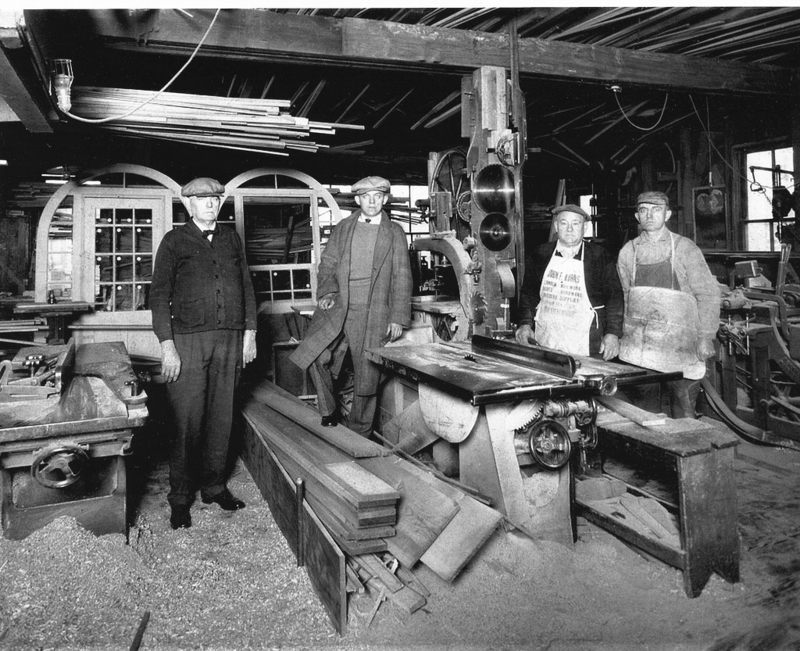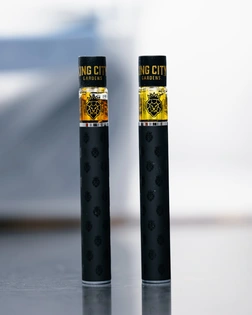
In high school shop class, Frank Donners often got high marks for accidental demonstration of subatomic principles such as gravity and polarity, through many falls and egregious misuse of large magnets. So it wasn’t completely surprising that the 34-year-old Bowlington man accidentally stumbled onto a major breakthrough in the study of light and electromagnetic waves, when, on a random whim, he figured out how to stop light beams in their tracks while sitting at his own garage workbench.
Even more interesting, the woodworker-cum-physicist was able to accomplish the feat with a mediocre 6-foot 2x4.
“The light is completely reduced to a shadow, we believe, due to the opacity of the wood,” he announced to peers in the science community via nonviral video last week.
Donner says he was cheefing in his garage laboratory when he came across the strange behavior of certain light waves. “It was if they were suspended in beams, coming from my window, and in these beams I could see the actual floating light particles, especially moreso when I kicked up a bunch of sawdust into it.”
It was after a few piles of sawdust that he suddenly had an epiphany. Following his recovery from a terrible coughing spell, Donners managed to snag a nearby framing stud and affixed it to the workbench barclamp. Then, he sat back to observe the magic. Sure enough, the light, acting as a particle, could not bend, and was totally blocked by the lumber, creating a dark shadow on the ground.
It was, appropriately, a ground-breaking moment.
“Matilda!” he yelled to his wife, over and over, until the whole family came to observe the phenomenon.
The discovery, which brought him acclaim and series of research grants, is now catalogued in his forthcoming book, “The Block of Light,” which immediately skyrocketed to the top 349,617 on Amazon.
Donners, a self-taught carpenter by trade, learned much of what he knows from studying social media outlets and his own intuition. Always drawn to the mysteries of the quantum universe, he is best known among friends for "feats of science," such as "freezing light" by shining a flashlight into an ice-cube tray, and on one occasion, "holding a light particle" suspended in space, between two chopsticks while at the local Chinese buffet. Now, energized by his own momentum and growing recognition, Donners plans several successive experiments, such as testing whether a groundhog could see its shadow on groundhog’s day, by studying his ability to see his own shadow.
"I think we all can agree there's gonna be a shadow," he says. "The question that haunts me, is why?"







![(0.11g) Blueberry Lemonade Pearl Gummies [1:3 THC:CBG] 2pk 20mg | 1 Day | 946207 (0.11g) Blueberry Lemonade Pearl Gummies [1:3 THC:CBG] 2pk 20mg | 1 Day | 946207](/rails/active_storage/representations/proxy/eyJfcmFpbHMiOnsiZGF0YSI6MzI0NDk4LCJwdXIiOiJibG9iX2lkIn19--21a42f6fdb7a5d31ac07819d3bf9b8f6abebb446/eyJfcmFpbHMiOnsiZGF0YSI6eyJmb3JtYXQiOiJwbmciLCJyZXNpemUiOiI0NjIgeCAzMTUiLCJjb252ZXJ0Ijoid2VicCJ9LCJwdXIiOiJ2YXJpYXRpb24ifX0=--d7c54d32abcb6ca24ad06932a0e70673da4d7d48/products_missing_image_cs.png)



![(5.66g) Black Sheep | Zweet King's Kush | Small Bud Flower | Indica | [5.66g] (5.66g) Black Sheep | Zweet King's Kush | Small Bud Flower | Indica | [5.66g]](/rails/active_storage/representations/proxy/eyJfcmFpbHMiOnsiZGF0YSI6MTA3ODM0LCJwdXIiOiJibG9iX2lkIn19--03de2c978d0b6e9a26833d74f0950d7648418278/eyJfcmFpbHMiOnsiZGF0YSI6eyJmb3JtYXQiOiJqcGciLCJyZXNpemUiOiI0NjIgeCAzMTUiLCJjb252ZXJ0Ijoid2VicCJ9LCJwdXIiOiJ2YXJpYXRpb24ifX0=--4c2b017c858149e948c71bab98eeffb13053e24c/flower-stock-14-v1.jpg)